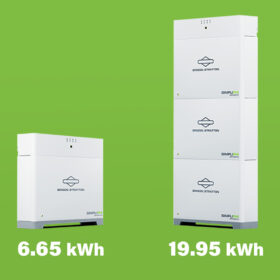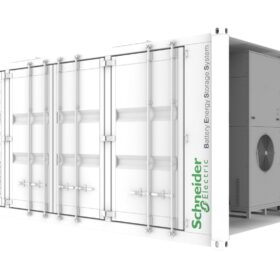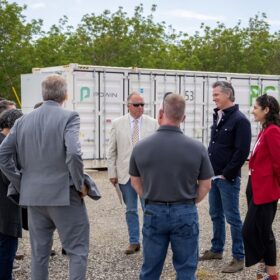Residential solar has been navigating difficult waters over the past year, as high interest rates squeeze the savings made available to homeowners. Policy changes, like net energy metering (NEM) 3.0 in California, are further putting stress on the value proposition to rooftop solar customers, crushing demand in recent months.
Major publicly traded solar stocks are down over 75% over the past year, and demand in major markets like California has peeled back 40% to 80%, with the damage from NEM 3.0 not fully evaluated yet.
While California has long served as a model for solar success, that may no longer hold true. In its Roundtables US 2023 live event, pv magazine USA invited a panel of four distributed solar and energy storage experts to offer their view of how the market is responding to policy changes and offered some lessons from California’s recent struggles.

We were joined by Carina Brockl, chief revenue officer, Aurora Solar, a solar sales and design platform provider; Blake Richetta, chairman and chief executive officer, Sonnen, a battery energy storage provider; Walker Wright, vice president of public policy, Sunrun, a leading residential solar and storage installer; and Bernadette del Chiaro, California Solar & Storage Association (CALSSA) executive director.
Wright began the conversation acknowledging that net metering was instrumental in kickstarting the market in California, which represents roughly 50% of the United States rooftop solar market. It, along with federal policy and California state incentives, was what made rooftop solar such a strong customer value proposition.
“The largest renewable energy market in California is distributed [solar],” said del Chiaro. “And yet what we have just done is not just a seismic shift… we are looking at an 80% drop in sales under the new NBT tariff. The months ahead are looking dimmer, not brighter.”
While residential solar is currently being hammered by headwinds, there are some forces that could counteract the market retraction. Brockl said though inflation has increased steadily, electricity prices have increased even more, and in some cases at double the rate of inflation. This makes the customer proposition to rooftop solar customers slightly more appealing as a hedge to rising utility rates, even if day one savings are razor-thin or even in the negative.
Richetta, representing energy storage provider Sonnen, expressed more optimism than his fellow panelists. Sonnen has its roots in Germany, which experienced a similar market contraction in rooftop solar when it phased out its feed-in tariff policy that supported the creation of the market. Since then, the market has recovered, and Germany has among the highest rooftop solar penetration rates in the world.
“There was a market need to harness solar and harmonize it with grid operations… and to transform an intermittent form of generation to something that is firm and dispatchable,” said Richetta.
Energy storage is expected to play the role of transforming solar into a highly dispatchable energy source. Programs like battery aggregation and virtual power plants are expected to improve the captured value and grid benefits of solar.
While NEM 3.0 was pitched as a means to support more storage on the grid, it has thus far not created that end result. Del Chiaro said the rulemaking “pushed California [residential solar] off a cliff with no parachute.”
What’s more, there has been a rising interest in grid defection in California. Customers who are offered a poor deal from the utility company may decide to “cut the cord” and rely wholly on their own solar and energy storage systems.
The panelists all agreed that this is not a desirable outcome. A grid with intelligently linked solar and batteries dispatching energy and smoothing out demand system-wide is far more efficient than one made of broken connections and islanded customers.
Furthermore, coordinated distributed resources can form microgrids, keeping critical resources powered when the larger grid is not performing. In an era of increased extreme weather events and aging grid infrastructure, distributed solar and storage can help ensure the lights stay on.
“We need to move in the direction of grid-integrated distributed energy resources… if we mess up, and miss this opportunity to transition to that future, I think grid defection is absolutely on the table for everybody, not just the wealthy,” warned del Chiaro. “This is something that California policymakers should care about.”
As for lessons for other state policymakers from California’s struggles, del Chiaro said, “I’ve never said this in 20-plus years of renewable energy advocacy in California, but sadly I would say do not follow our lead. If you want to move us in a direction towards greater grid integration and greater grid services, think like a consumer. Provide a pathway, provide real value, and make it something that can be scalable at speed.”
The panel discussion, which also included mention of other emergent California policies, hot markets in other states for residential solar, and the role for distributed energy storage, can be viewed in full below.
This content is protected by copyright and may not be reused. If you want to cooperate with us and would like to reuse some of our content, please contact: editors@pv-magazine.com.








Predatory sales practices in the Solar industry have not helped at all. People who are unhappy with their solar tell everyone with ears to hear that solar is bad. And from their perspective it’s true.
Also a lack of transparency in the dealer fees on solar loans, which can be upwards of 30 points, is just ridiculous. Imagine a car or home loan at that rate.
Australian states are heading in exactly the same direction..
We added solar to our home 2 years ago and love it. We haven’t had an electric bill since. But we also payed cash for the system, which most in California simply aren’t able to do, but in today’s market there is no way in hell I would add solar to my home. It would take 20 years or more for it to pay for itself at the rates they are paying. The article talks about people leaving the grid altogether which is what I would like to do. In the future I will probably add batteries to my system and just cut the cord. California can’t be relied upon to keep utilities functioning properly. Like everything else in the state the grid is falling apart and California can’t seem to figure out how to keep the lights on.